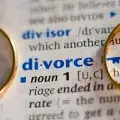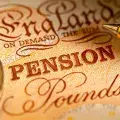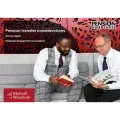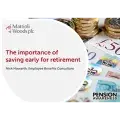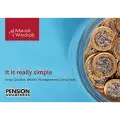There is a well-used phrase in the financial advice sector cautioning against the perils of the tax tail wagging of the proverbial investment dog; to translate, tax savings should be the result of advice not its main driver. But could it be that there is a blind spot in the industry when it comes to advising clients on their planning requirements relating to pension death benefits from money purchase pension arrangements.
The arrival of pension freedoms in April 2015 brought a sea change in the taxation of pension wealth on death. To understand how extensive this was, let us first consider the position in the years prior.
Pension death benefits pre-2015
In short, unless you passed away before turning age 75 without having crystallised your pension pot (that is to say, you had not withdrawn your tax-free cash entitlement) and were within lifetime pension limits, money purchase pension assets were taxed before passing to beneficiaries.
Only a spouse or dependents were entitled to retain the death benefits within the pension wrapper to provide for their ongoing financial requirements, whereby tax at the marginal rate was paid on any income drawn within specific capped limits. Significantly this was even the case where a lump sum would otherwise have been tax free.
Planning opportunity
While benefitting from a tax-free withdrawal would therefore, to many, have been the most attractive means by which to access capital that in any other scenario would be taxed, it was not without possible adverse implications.
If we consider that pension arrangements are often one of the most valuable assets an individual owns, the distribution to the surviving spouse could potentially result in inheritance tax (IHT) consequences on second death if the value of the estate thereafter exceeded available nil rate bands.
As a means by which to avoid this, spousal bypass trusts, or pension death benefit trusts as they are also known, were a popular planning tool. Such trusts provided the opportunity for a tax-free distribution from the pension scheme, allowing the spouse to benefit from withdrawals as necessary, but while ringfencing the proceeds from potential IHT liabilities when the spouse passed away. The greater flexibilities of a spousal bypass trust such as the ability to make a loan, treated as a debt on the estate following the subsequent death of the spouse, or the ability to invest in residential property made them a viable alternative to a tax-free distribution.
Pension death benefits post-2015
The changes brought about in April 2015 were such that regardless of whether a member’s pension arrangements are uncrystallised or not, if death occurs pre age 75 and the benefits are paid at the discretion of the pension scheme administrator/trustees and therefore outside the estate of the deceased, they will be paid tax free. This assumes that the funds are designated to the nominated beneficiaries within two years of the scheme administrator/trustees becoming aware of the death of the member and that the deceased had sufficient available lifetime allowance. Importantly, the tax-free benefit applies whether the pension assets are distributed as a lump sum or paid out over an indefinite period of time as income. In this way, wealth can be retained in the IHT shelter of the pension wrapper until required, thus overcoming the previous issue of potentially creating an inadvertent IHT liability by distribution of pension death benefits. Furthermore, current legislation allows for an indeterminate succession of pension wealth in that on death of a beneficiary, any remaining funds are designated to their nominated successor on the same basis, and so on.
We might therefore conclude that the use of a bypass trust is defunct, not least given that on death post age 75, death benefits paid to beneficiaries as income are subject to the recipient’s marginal rate of tax. Where a distribution is made to a non-qualifying individual such as a trust, a special lump sum death benefit tax charge of 45% is levied. But I would argue that to dismiss their value, is indeed to fall foul of letting the tax tail wag the dog. Let me expand.
Benefits of using a spousal bypass trust
As mentioned previously, in order to ensure that pension assets are not considered for IHT purposes the deceased cannot dictate to whom, when and to what extent their pension assets are distributed. The use of an expression of wish is instructive but not binding such that the discretionary provisions of a pension arrangement ensure that there is no control beyond the grave and therefore pension wealth does not form part of an individual’s estate assessable to inheritance tax.
However, what if an individual wants to have a greater level of control? The mechanics of designating pension capital to a nominated beneficiary is such that once complete, the beneficiary has free reign to access the proceeds as they desire (within the confines of liquidity available). In the case of a death pre age 75, this would be entirely tax-free.
We are all familiar with the benefit of a trust in terms of enshrining an individual’s intentions. For example, protecting a beneficiary from receiving a large sum of money at an age when they are not mature enough to manage it, while a discretionary trust can safeguard capital against a future divorce, bankruptcy or assessment for long-term care provision. Trusts can also accommodate instructions to provide a stipulated level of income to support ongoing financial requirements, rather than allocate fixed percentages of capital, acknowledging that given their discretionary nature, such directives cannot be binding.
For many, there is also a desire to control what happens on the subsequent death of a beneficiary. This is especially true in blended family arrangements, whereby there may be a desire to provide for the surviving spouse, but thereafter wishing to ensure that any remaining benefit stays within the direct family lineage. A pension arrangement is not able to facilitate such instructions, whereby once death benefits are designated to a beneficiary, it becomes theirs to nominate their own beneficiaries in the eventuality of their own death.
For those with anything other than simple succession planning requirements, the additional advantage of being able to select trustees, rather than relying on the discretion of the pension scheme administrator or professional pension scheme trustee is also often desirable, (albeit certain pension arrangements can appoint non-member trustees to perform a similar function). In this way it is possible to ensure those making the decisions as to the distribution of death benefits are both familiar with the individual’s intentions, but also the requirements and potential issues of the beneficiaries.
The cost of control and flexibility, all is not as it may first appear
At this point, many would deliberate their desire for control and flexibility with the perceived tax costs, especially where death occurs after the age of 75. The special lump sum death benefit charge is deducted by the pension scheme administrator and reported to HM Revenue and Customs via the Accounting for Tax system. This therefore reduces the net amount distributed to the spousal bypass trust.
However, this would ignore the tax credit the beneficiary of a trust distribution is entitled to where their marginal rate of tax is lower than the 45% trust rate paid on receipt of the funds. Upon distribution from the trust, the special lump sum death benefit charge is treated as income of the beneficiary, such that the beneficiary is taxed at their marginal rate on the gross income before the application of the tax charge. They are then able to apply a credit to the value of the tax already paid.
To illustrate, let us consider a pension arrangement of £100,000 whereby the member dies at the age of 77, with the benefits to be paid to a spousal bypass trust. The trust receives a net payment after the deduction of tax of £55,000.
Upon distribution of £10,000 the beneficiary is treated for tax purposes as receiving a gross sum of £18,182. If the beneficiary is a basic rate taxpayer, tax of £3,636 would be due. The beneficiary could therefore reclaim the additional tax paid of £4,546 either via self-assessment or by submitting form R40.
The overall effect being that tax on death benefits distributed via way of a spousal bypass trust is paid at the beneficiary’s marginal rate of tax, whereby on death post age 75, the position is as if the beneficiary had received the payment from the pension scheme directly.
Importantly, there is no time limit in which the pension death benefits should be advanced to beneficiaries from a spousal bypass trust, nor an expiry on the ability to claim the associated tax credit, albeit it should be noted that the credit is limited to the capital settled in the trust and does not apply to investment growth. The trust could therefore represent a useful succession planning vehicle to cascade wealth through successive generations at minimal levels of tax, especially where distributions are made to non-taxpayers such as children, perhaps to assist with school or university fees.
So, what are the costs?
Where a spousal bypass trust is used to distribute death benefits deriving from the death of a member pre age 75, there is a potential tax leak, given that if retained in a pension scheme the distributions are tax free, whereas distributions from a trust are subject to the beneficiary’s marginal rate of tax. Death post age 75, and the ability to mitigate the special lump sum death benefit tax charge means that the net position to the beneficiary will be the same. However, there is a wider impact in terms of lost investment growth and the compounding effects thereon, when compared to a distribution directly to a beneficiary. This is exacerbated the longer funds are retained within the trust and the tax credit is deferred.
With effect from 6 October 2020, all spousal bypass trusts must be registered with the trust registration service from outset, whilst they also fall under the relevant property regime and therefore will potentially be subject to periodic and exit charges. It should be noted that the ten-year reference period does not always commence from the date the spousal bypass trust was created. Where death benefits are paid from a trust-based pension arrangement, the ten yearly anniversary date is determined by the date the individual became an active member of the pension scheme from where the death benefits were derived. Where pension benefits have been transferred and consolidated it is necessary to trace the origins of the benefits to determine the appropriate reference date(s). If pension contributions have been made to multiple trust-based pension arrangements, before being consolidated and later paid to a spousal bypass trust, it is possible that multiple settlements will be made, each with their own ten yearly anniversary and IHT nil rate bands for periodic and exit charges. While this would undoubtedly add to the administration burden of a spousal bypass trust and by association the likely accountancy costs for managing its tax compliance it could assist in mitigating any potential tax arising.
Finally, when remitted to a spousal bypass trust, the benefits become subject to income and capital gains tax, from which a pension scheme is exempt, albeit the ability of a beneficiary to make use of income tax credits as outlined above, or indeed for the trust to utilise non-incoming producing investment structures such as investment bonds, can provide valuable tax planning opportunities to help minimise the tax burden
What is the answer?
As with all matters relating to advice, it is important to thoroughly understand the client’s objectives in order to determine the most appropriate solution to meet their requirements. An understanding of a client’s wishes on death, extending beyond the death of a spouse will be informative as to the extent to which these can be accommodated via the limited scope of pension succession rules. It is these conversations in which private client practitioners excel, but can and should be extended to retirement assets, whereby collaboration with pension and financial advisers will ensure that the full impact of any planning can be explored before being implemented.
While acknowledging an increased tax burden, this may not be as onerous as it appears on first view, and indeed, may be a cost worth bearing in exchange for the ability to ensure wealth is inherited by those it is intended for, at a time and in a manor most suitable. In short, the options available should be considered in terms of their merits for delivering the desired outcome, and not simply on the associated tax benefits or costs, not forgetting that a blended solution may be the answer!







